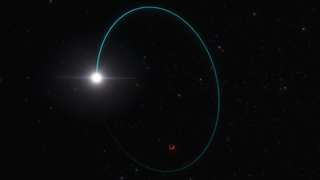
Robert Lea
Robert Lea is a science journalist in the U.K. whose articles have been published in Physics World, New Scientist, Astronomy Magazine, All About Space, Newsweek and ZME Science. He also writes about science communication for Elsevier and the European Journal of Physics. Rob holds a bachelor of science degree in physics and astronomy from the U.K.’s Open University. Follow him on Twitter @sciencef1rst.
Latest articles by Robert Lea
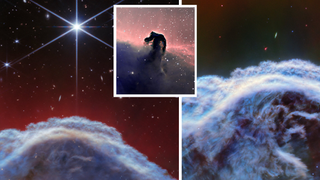
Horsehead Nebula rears its head in gorgeous new James Webb Space Telescope images (video)
By Robert Lea published
The James Webb Telescope has zoomed in on the Horsehead Nebula, capturing slices of this stunning star-forming region close to Earth in an entirely new light.
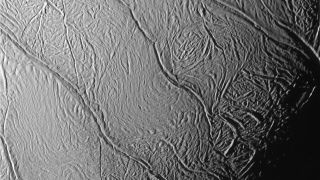
'Tiger stripes' on Saturn's moon Enceladus could reveal if its oceans are habitable
By Robert Lea published
A new model of Enceladus "tiger stripe" fractures and their connection with the moon of Saturn's ice geysers and subsurface oceans could have implications for its ability to support life.
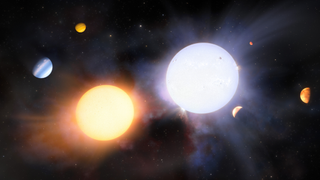
Astronomers finally know why stars born from the same cloud aren't identical twins
By Robert Lea published
Astronomers finally know why giant binary stars born from the same collapsing cloud of gas and dust can be "non-identical twins" with different characteristics and planetary systems.
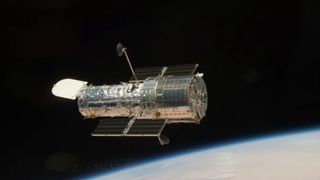
Hubble Space Telescope pauses science due to gyroscope issue
By Robert Lea published
The Hubble Space Telescope entered safe mode and stopped conducting science on April 23 when one of its three remaining gyroscopes sent faulty readings back to Earth.
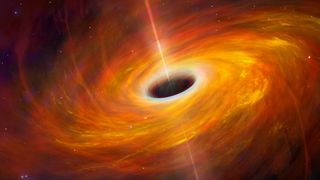
'Traffic jams' in the hearts of galaxies can force black holes to collide
By Robert Lea published
Supermassive black holes may create conditions akin to "cosmic intersections with failed traffic lights" that make collisions between smaller stellar-mass black holes inevitable.
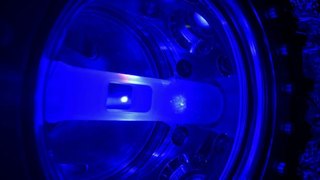
Highly precise atomic clocks could soon get even better. Here's how
By Robert Lea published
Superradiant atoms could help us measure time more precisely than ever before, a theory developed with the aid of the great-grandson of the "father of the atom," Niels Bohr.
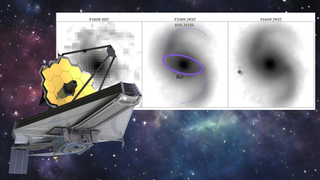
James Webb Space Telescope discovers some early universe galaxies grew up surprisingly fast
By Robert Lea published
"This means we will have to adjust our views on early galaxy evolution."
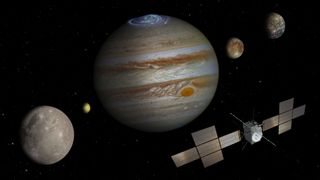
Ice-penetrating radar will help JUICE and other spacecraft find water beyond Earth
By Robert Lea published
When it arrives at Jupiter and the planet's moons in 2031, the JUICE spacecraft will use ice-penetrating radar to see beneath determine habitability.
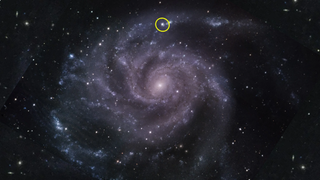
NASA's Fermi space telescope finds a strange supernova with missing gamma rays
By Robert Lea published
NASA's Fermi Space Telescope has failed to see gamma rays from a nearby supernova that should be created when it generates the high-energy cosmic rays that bombard Earth in their trillions.
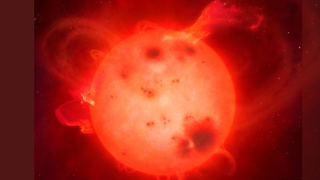
Stellar detectives find suspect for incredibly powerful 'superflares'
By Robert Lea published
Some stars erupt with 'superflares' 10,000 times as powerful as solar flares from the sun. A team of "stellar detectives" are on the case and may now know why some stars are so violent.
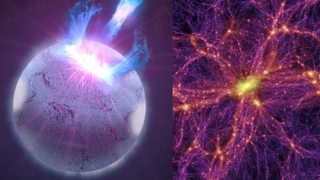
Across the universe, dark matter annihilation could be warming up dead stars
By Robert Lea published
Neutron stars could act as gravitational traps for dark matter, forcing these mysterious particles to collide, annihilate and warm up otherwise cold dead stars.
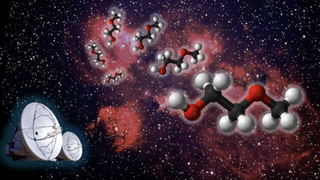
Buried in the Cat's Paw Nebula lies one of the largest space molecules ever seen
By Robert Lea published
Scientists have discovered one of the largest molecules ever seen in space in the Cat's Paw nebula. The discovery hints at how chemical complexity emerges as stars form.
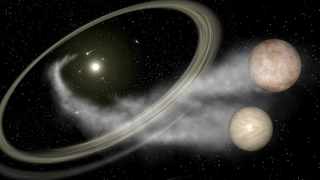
The mystery of how strange cosmic objects called 'JuMBOs' went rogue
By Robert Lea published
Scientists may have discovered how JuMBOs, strangle binary objects found in Orion, may have gone rogue while staying gravitationally bound. The discovery may shake up theories of planet formation.
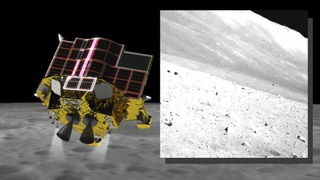
Japan's SLIM moon lander defies death to survive 3rd frigid lunar night (image)
By Robert Lea published
Japan's SLIM lunar lander has now survived three week-long nights on the moon, braving temperatures as low as minus 274 degrees Fahrenheit, despite not being designed to last one!
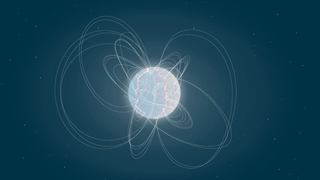
Giant gamma-ray flare from 'recently deceased' magnetar lights up Cigar Galaxy
By Robert Lea published
Astronomers have discovered a flare erupting from a highly magnetic "dead star" outside the solar system for the first time. The magnetar flare lit up the entire Cigar Galaxy in gamma rays.

Earth got hammered by cosmic rays 41,000 years ago due to a weak magnetic field
By Robert Lea published
Earth's magnetic shield weakened around 41,000 years ago, resulting in increased bombardment of our atmosphere by energetic charged particles called cosmic rays.
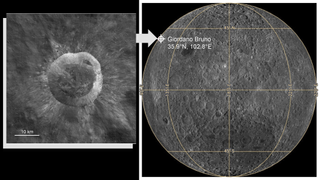
Earth's weird 'quasi-moon' Kamo'oalewa is a fragment blasted out of big moon crater
By Robert Lea published
Scientists turned into cosmic crime scene investigators to reconstruct the impact that sent Earth's "quasi-moon" Kamo'oalewa rocketing from the lunar surface millions of years ago.
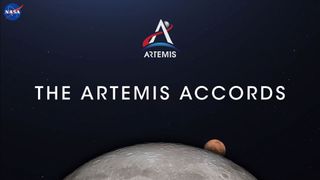
Artemis Accords: What are they & which countries are involved?
By Robert Lea last updated
Reference As the Artemis program aims to return humanity to the moon and beyond, the Artemis Accords lay out a framework for nations collaborating in this effort.
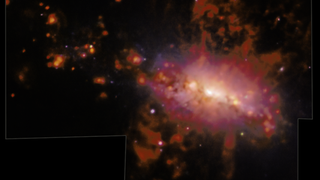
Cosmic fountain is polluting intergalactic space with 50 million suns' worth of material
By Robert Lea published
Astronomers have mapped a 20,000-light-year-long fountain of gas blasting from a nearby galaxy and polluting intergalactic space at 450 times the top speed of a jet fighter.
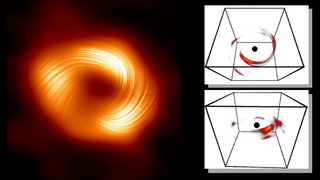
Scientists use AI to reconstruct energetic flare blasted from Milky Way's supermassive black hole
By Robert Lea published
Combining AI and observations of the Milky Way's supermassive black hole, scientists have reconstructed a 3D video of Sagittarius A* and its environment.
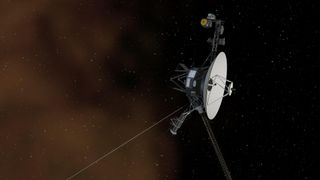
NASA's Voyager 1 spacecraft finally phones home after 5 months of no contact
By Robert Lea published
On Saturday, April 5, Voyager 1 finally "phoned home" and updated its NASA operating team about its health. The interstellar explorer is back in touch after five months of sending back nonsense data.
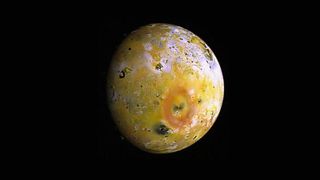
Jupiter's violent moon Io has been the solar system's most volcanic body for around 4.5 billion years
By Robert Lea published
Jupiter's moon Io is the solar system's most volcanic body thanks to a gravitational tug of war that rages below its surface. But now scientists know the violent moon has always been this way.
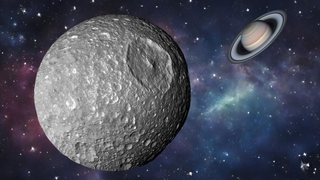
Saturn's 'Death Star' moon Mimas may have gotten huge buried ocean from ringed planet's powerful pull
By Robert Lea published
"We may be seeing Mimas at a particularly interesting time."
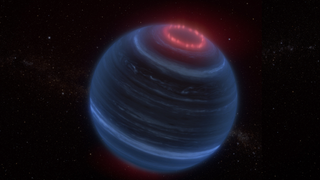
James Webb Space Telescope's 'shocking' discovery may hint at hidden exomoon around 'failed star'
By Robert Lea published
JWST's surprise discovery of methane emissions and likely aurorae over a distant brown dwarf could indicate this "failed star" is orbited by an active moon.
